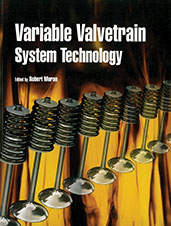Technical Paper
Analysis Lead Drivability Assessment
2015-09-29
2015-01-2804
Drivability and powertrain refinement continue to gain importance in the assessment of overall vehicle quality. This notion has transcended its light duty origins and is beginning to gain considerable traction in the medium and heavy duty markets. However, with drivability assessment and refinement also comes the high costs associated with vehicle testing, including items such as test facilities, prototype component evaluation, fuel and human resources. Taking all of this into account, any and all measures must be used to reduce the cost of drivability evaluation and powertrain refinement. This paper describes an analysis based co-simulation methodology, where sophisticated powertrain simulation and objective drivability evaluation tools can be used to predict vehicle drivability. A fast running GT power engine model combined with simplified controls representation in Matlab/Simulink was used to predict engine transients and responses.

